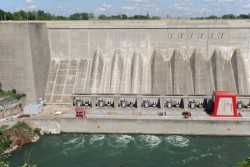Niagara Falls Is Shrinking: What It Means for the Natural Wonder
January 15, 2015 9:58 am It’s true — you can believe the hype. Every year, Niagara Falls shrinks nearly 12 inches, leaving less of the magnificent waterfalls and legendary landscape for visitors to see thanks to erosion. While the Falls will still be around for a long while yet, you should plan a trip there if you want to learn more about the natural forces creating constant, subtle change in Niagara.
It’s true — you can believe the hype. Every year, Niagara Falls shrinks nearly 12 inches, leaving less of the magnificent waterfalls and legendary landscape for visitors to see thanks to erosion. While the Falls will still be around for a long while yet, you should plan a trip there if you want to learn more about the natural forces creating constant, subtle change in Niagara.
The Science
Niagara Falls was created more than 12,000 years ago, during the last ice age which was called the Wisconsin Glaciation. At the end of the great freeze, the glacier covering the Ontario region of Canada retreated northward, carving into the ground huge mountains and valleys. Meanwhile, as the Earth warmed back up, fresh water from the glaciers poured into recently vacated regions. Various rivers and lakes formed from the runoff in the newly gouged channels, including the Hudson River and most of the Great Lakes. Most important to our tale, however, was the development of the Niagara Escarpment and a handful of lakes which would eventually transform into the Niagara River and Niagara Falls.
You may remember from Earth science class that water is immensely powerful. The sand on beaches around the world was created by the continual pounding of the waves on the shore, and the humble Colorado River was able to engrave deep into the Arizona rock to create the Grand Canyon. The water of the Niagara River is no different. After 12,000 years of fast, formidable movement over the Niagara Escarpment, Niagara Falls has worn its way into the surrounding rock. Most scientists estimate that Niagara Falls has shifted backwards more than 7.1 miles in the years since its creation, and without human interference, they expect the erosion to continue into the future.
The Counteraction
Still, there is hope for Niagara Falls. A number of recent developments in its history — both natural and human-made — are working against the percussive flow of water to preserve the waterfalls as they currently appear.
 First, researchers have noted that the rock currently beneath Niagara Falls is limestone, which can be more resistant to the erosive force of water than other sedimentary rocks. Niagara Falls does continue to move back a small amount every year, but for now, the movement is thwarted largely by the limestone.
First, researchers have noted that the rock currently beneath Niagara Falls is limestone, which can be more resistant to the erosive force of water than other sedimentary rocks. Niagara Falls does continue to move back a small amount every year, but for now, the movement is thwarted largely by the limestone.
Second, humans now utilize the mighty power of the Niagara River to naturally generate electricity for the surrounding region. At the turn of the century, Niagara native Josef Schoellkopf built a series of power houses along the river, and ever since hundreds of companies have improved upon his designs; now, most of the plants currently in operation are from the mid-century, with minor improvements throughout the intervening decades. The hydroelectric-generating plants siphon water from the main channel of the Niagara River, which means that there is less water traveling over the Falls. This lower flow rate decreases the impact of water on stone, so erosion has slowed down considerably.
The Future
While Niagara Falls continues to erode into the Niagara Escarpment, eager visitors to the region need not worry about the beloved landmark disappearing completely anytime soon. Instead, subtle changes in the shape and position of the waterfalls will take place, but they will hardly hamper any Niagara Falls vacations. There may not be any danger of a disappearing Niagara Falls in your lifetime, but you might consider checking the natural wonder off your bucket list soon, just in case.
Categories: Falls Avenue Resort
